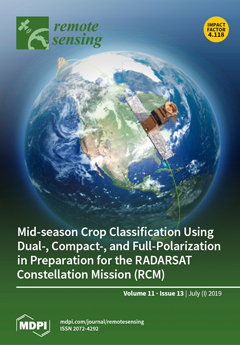Crop yield estimation at a regional scale over a long period of time is of great significance to food security. In past decades, the integration of remote sensing observations and crop growth models has been recognized as a promising approach for crop growth monitoring and yield estimation. Optical remote sensing data are susceptible to cloud and rain, while synthetic aperture radar (SAR) can penetrate through clouds and has all-weather capabilities. This allows for more reliable and consistent crop monitoring and yield estimation in terms of radar sensor data. The aim of this study is to improve the accuracy for winter wheat yield estimation by assimilating time series soil moisture images, which are retrieved by a water cloud model using SAR and optical data as input, into the crop model. In this study, SAR images were acquired by C-band SAR sensors boarded on Sentinel-1 satellites and optical images were obtained from a Sentinel-2 multi-spectral instrument (MSI) for Hengshui city of Hebei province in China. Remote sensing data and ground data were all collected during the main growing season of winter wheat. Both the normalized difference vegetation index (NDVI), derived from Sentinel-2, and backscattering coefficients and polarimetric indicators, computed from Sentinel-1, were used in the water cloud model to derive time series soil moisture (SM) images. To improve the prediction of crop yields at the field scale, we incorporated remotely sensed soil moisture into the World Food Studies (WOFOST) model using the Ensemble Kalman Filter (EnKF) algorithm. In general, the trend of soil moisture inversion was consistent with the ground measurements, with the coefficient of determination (R
2) equal to 0.45, 0.53, and 0.49, respectively, and RMSE was 9.16%, 7.43%, and 8.53%, respectively, for three observation dates. The winter wheat yield estimation results showed that the assimilation of remotely sensed soil moisture improved the correlation of observed and simulated yields (R
2 = 0.35; RMSE =934 kg/ha) compared to the situation without data assimilation (R
2 = 0.21; RMSE = 1330 kg/ha). Consequently, the results of this study demonstrated the potential and usefulness of assimilating SM retrieved from both Sentinel-1 C-band SAR and Sentinel-2 MSI optical remote sensing data into WOFOST model for winter wheat yield estimation and could also provide a reference for crop yield estimation with data assimilation for other crop types.
Full article





